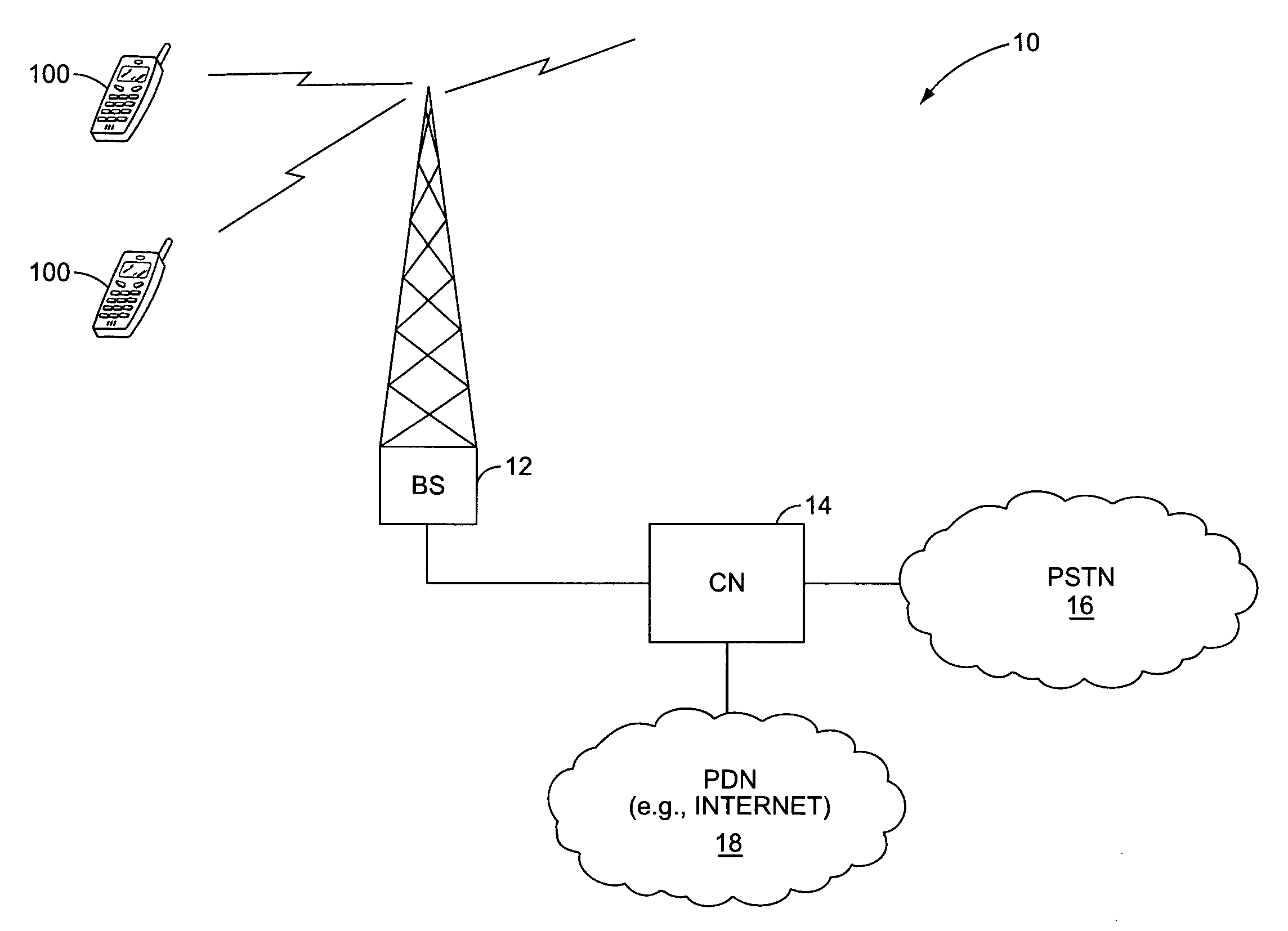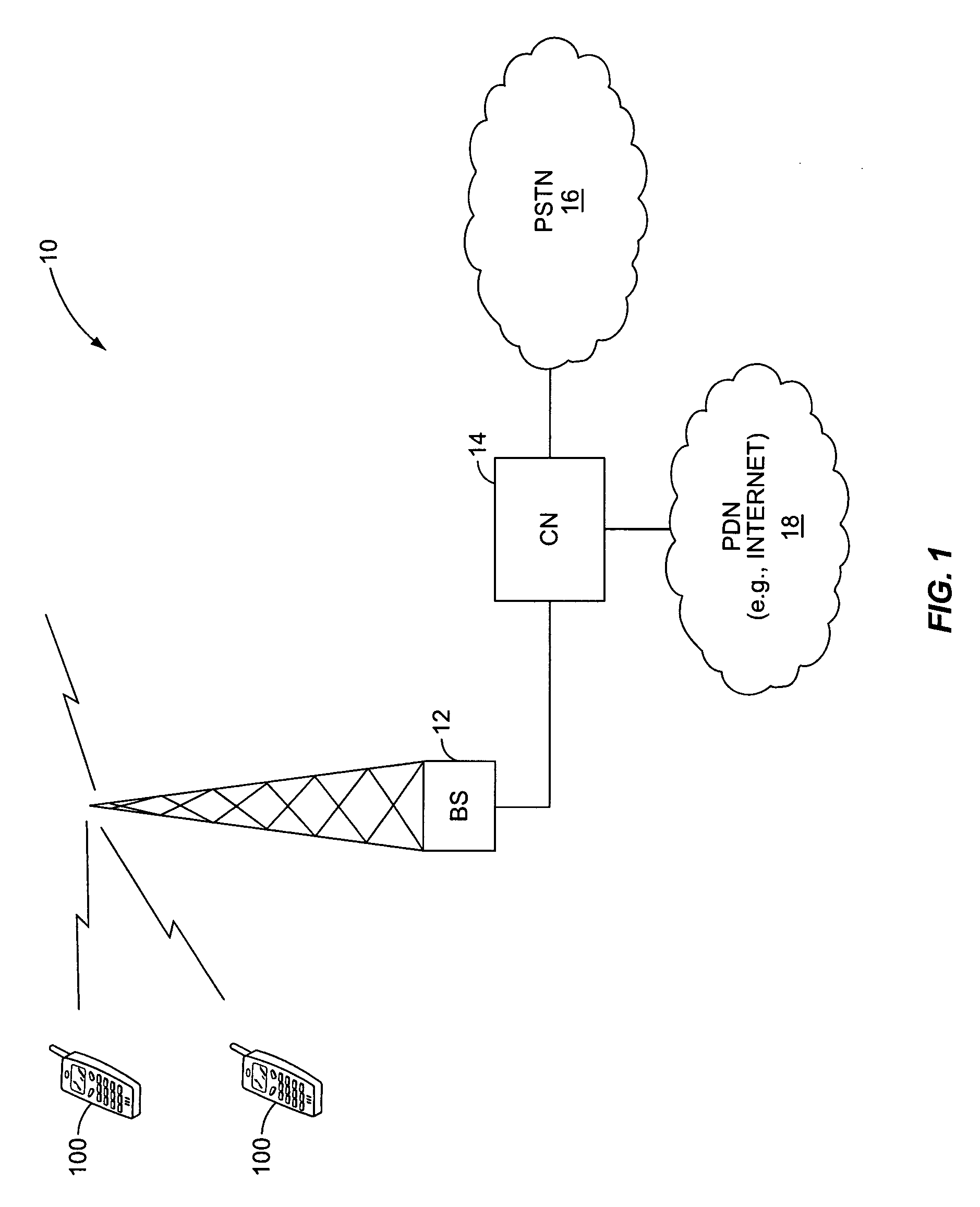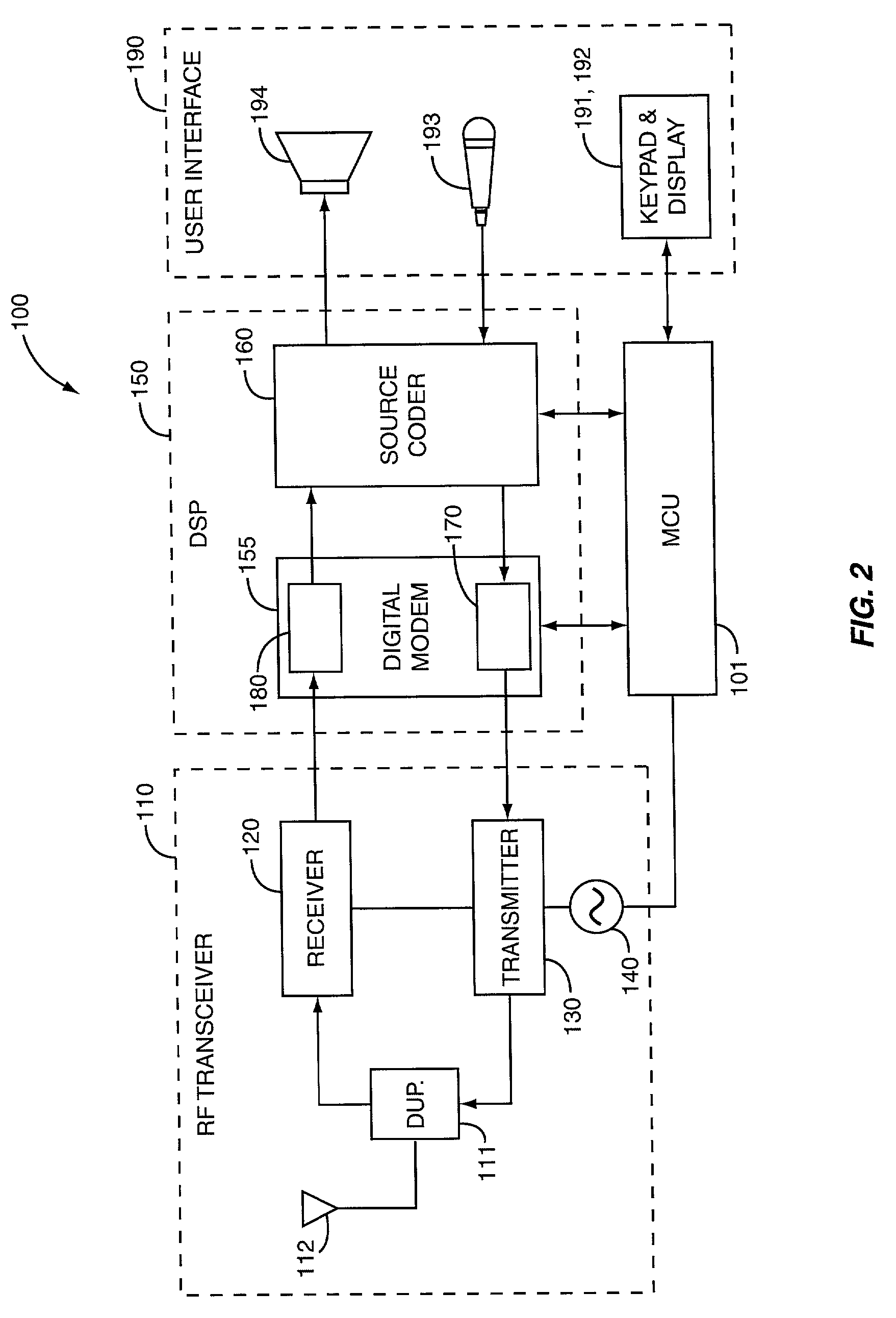Reverse link power control in 1xEV-DV systems
a technology of reverse link and power control, applied in power management, electrical equipment, wireless commuication services, etc., can solve the problems of continuous change of channel conditions, interference-limited systems of cdma systems, and mobile stations
- Summary
- Abstract
- Description
- Claims
- Application Information
AI Technical Summary
Benefits of technology
Problems solved by technology
Method used
Image
Examples
first embodiment (
Implicit Method)
[0066]FIG. 6 is a graph illustrating the transmit power level of a mobile station 100 on the reverse pilot, traffic, and rate control channels in a first embodiment of the present invention. In the embodiment shown in FIG. 6, the gain of the reverse rate control channel is fixed relative to the reverse pilot channel. The gain of the reverse traffic channel is allowed to vary relative to the reverse pilot channel power between minimum and maximum values. Thus, the reverse rate control channel has a fixed offset relative to the reverse pilot channel, while the reverse traffic channel has a variable offset. The maximum and minimum values for the reverse traffic channel offset are determined by the ratio of the reverse traffic channel power to reverse pilot channel power (the T / P ratio). The maximum traffic channel offset is determined by the maximum T / P ratio, which is referred to herein as (T / P)MAX. The minimum offset is determined by the minimum T / P ratio, which is re...
second embodiment (
Implicit Method)
[0082]FIG. 9 is a graph illustrating the transmit power level of a mobile station 100 on the reverse pilot, traffic, and rate control channels in a second embodiment of the present invention. In the second embodiment, the gain of the reverse traffic channel is fixed relative to the reverse pilot channel. The gain of the reverse rate control channel is allowed to vary relative to the reverse pilot channel power between minimum and maximum values. Thus, the reverse traffic channel has a fixed offset relative to the reverse pilot channel, while the reverse rate control channel has a variable offset. The maximum and minimum values for the reverse rate control channel offset are determined by the ratio of the reverse rate control channel power to reverse pilot channel power (the R / P ratio). The maximum traffic channel offset is determined by the maximum R / P ratio, which is referred to herein as (R / P)MAX. The minimum offset is determined by the minimum T / P ratio, which is ...
third embodiment (
Implicit Method)
[0090]FIG. 10 is a graph illustrating the transmit power level of a mobile station 100 on the reverse pilot, traffic, and rate control channels in a third embodiment of the present invention. In the third embodiment, the gain of the reverse traffic channel is allowed to vary relative to the reverse pilot channel power between minimum (T / P)MIN and maximum (T / P)MAX values. The gain the reverse rate control channel is fixed relative to the reverse pilot channel as long as the gain ratio between the reverse traffic channel power and the reverse pilot channel power is above (T / P)MIN. Thus, the reverse rate control channel has a target offset relative to the reverse pilot channel which is nominally fixed, while the reverse traffic channel has a variable offset. When (T / P)MIN is reached, the gain of the reverse rate control channel may be varied relative to the reverse pilot channel between a minimum value (R / P)MIN and a maximum value (R / P)MAX. The targeted offset for the r...
PUM
 Login to View More
Login to View More Abstract
Description
Claims
Application Information
 Login to View More
Login to View More - R&D
- Intellectual Property
- Life Sciences
- Materials
- Tech Scout
- Unparalleled Data Quality
- Higher Quality Content
- 60% Fewer Hallucinations
Browse by: Latest US Patents, China's latest patents, Technical Efficacy Thesaurus, Application Domain, Technology Topic, Popular Technical Reports.
© 2025 PatSnap. All rights reserved.Legal|Privacy policy|Modern Slavery Act Transparency Statement|Sitemap|About US| Contact US: help@patsnap.com



